Report Highlights
- Most consumers aren’t aware that 5G is about to launch
- 59.0% of consumers we polled didn’t know that 5G is around the corner. T-Mobile subscribers seemed to have the most knowledge of their carrier’s 5G plans.
- Consumers aren’t excited about 5G
- Consumers seem mostly indifferent to the pending roll-out. 38.1% of respondents reported that they weren’t excited about the new technology.
- Consumers are open to the possibility of home broadband from wireless carriers
- Our poll results indicate there seems to be a real opportunity in delivering home broadband using 5G, but more consumer education is required. T-Mobile stands to gain the most here.
- Almost 20% of consumers struggle with 4G LTE coverage at home or at work
- A total of 19.7% of consumers reported coverage issues with regular 4G LTE signal at home or at work. 8 years into the roll-out of LTE, it’s clear that a significant portion of consumers still have coverage problems
- A third of consumers believe cell signal causes cancer
- With largely-untested new “millimeter-wave” frequencies a key to components 5G, it’s likely that carriers will see resistance to roll-outs of the small cells required to blanket the country with the new technology.
About this Report
We’re on the eve of the broad rollout of 5G, yet our most recent poll shows that not only are most consumers are unsure of the benefits of the new technology, but many don't have reliable access to 4G LTE signal.
Carriers are claiming that 5G will be “revolutionary,” and all four major carriers are rushing to launch commercial networks before their competitors. It’s looking likely that Q4 of 2018 will see limited 5G rollouts across the US, with further expansion through 2019.
- T-Mobile has promised to roll out mobile 5G in 30 cities by the end of 2019.
- Verizon has just launched their 5G home broadband initiative in Houston, Indianapolis, Los Angeles and Sacramento.
- AT&T has promised to launch mobile 5G in at least 19 cities by the end of the year.
- Sprint has announced the first six cities that will be part of its 5G rollout in early 2019.
Clearly carriers are excited about 5G, but we wanted to know exactly how interested consumers are in the new technology. We also wanted to understand exactly what consumers think about the risks of cancer that might arise from overuse of cell phones. Our results showed that a significant proportion of consumers think that radiation from cell phones can increase risks of cancer.
About Waveform:
Founded in 2010, Waveform is a leading online reseller of cell phone signal boosters, small cells, and a systems integrator of in-building active and passive distributed antenna systems. The company has worked with over 20,000 customers to improve cell service in buildings of all sizes.
Survey Methodology:
Waveform conducted an online survey of 1,039 American adults between October 3rd and October 6th on SurveyMonkey to better understand consumer opinions about the merger. The results reflect a nationally representative sample, with a of confidence interval of 3%. More information about SurveyMonkey’s online survey methodology is available here.
Part 1: The 5G Rollout
We wanted to understand exactly how well consumers understand the coming rollout of 5G networks, so we asked 4 questions on this topic.
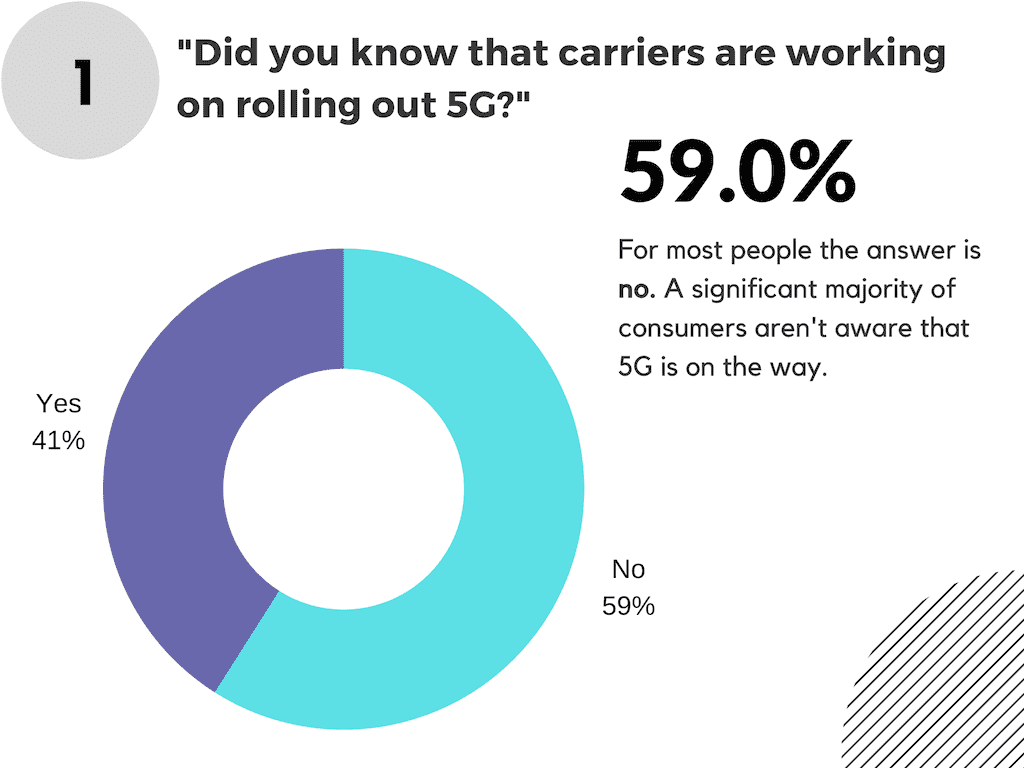
Despite a surge in carriers talking about their 5G rollouts in the press, a majority of consumers aren’t even aware the 5G is on the way. The bulk of national 5G marketing is yet to come, but clearly there’s quite a bit of work to be done to get the word out.
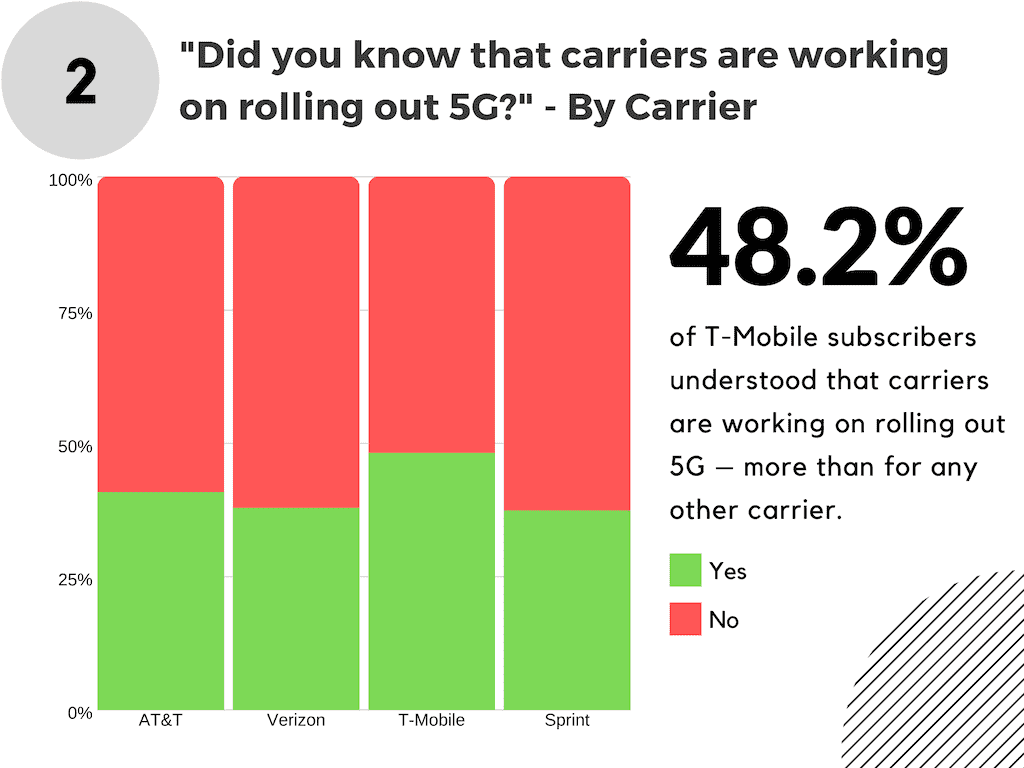
T-Mobile subscribers reported the highest awareness levels around the 5G rollout. We thought that this might simply be because T-Mobile subscribers skew younger, however further analysis revealed that the same pattern exists across every age group compared to subscribers of other carriers.
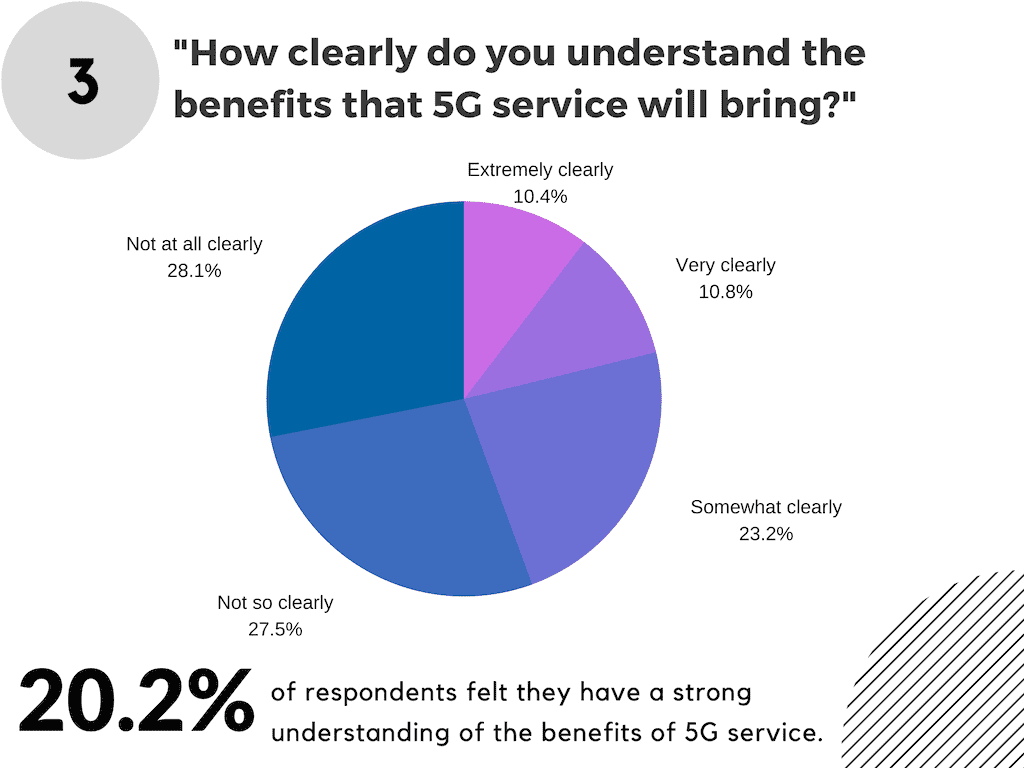
We wanted to understand how well our respondents understand the potential benefits of 5G. Only 10.4% of respondents thought they understood the benefits of 5G very well, while 55.6% of respondents felt that they understood “not at all clearly” or “not so clearly.”
This clearly represents an uphill battle for carriers in terms of customer education - simply announcing 5G won’t be enough.
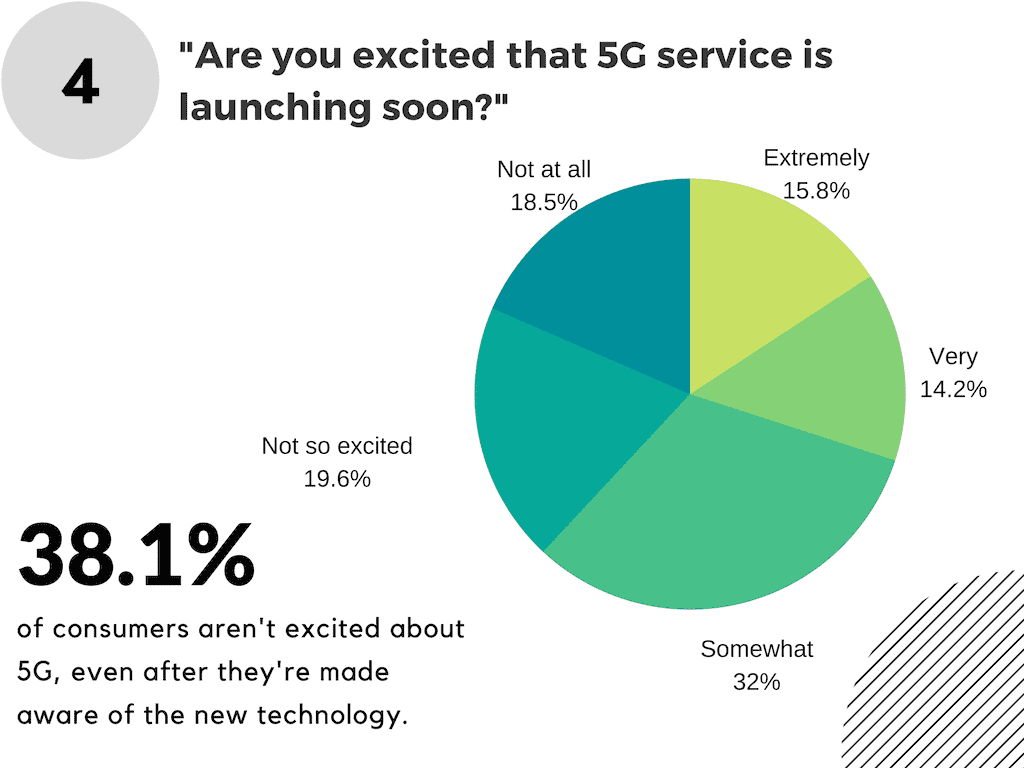
Even though most consumers don’t understand the benefits of 5G, there does seem to be some market interest in the new technology: a larger percentage were excited about the new technology than actually unterstood the benefits.
However, a significant portion of respondents – 38.1% – weren’t excited about the pending 5G rollout.
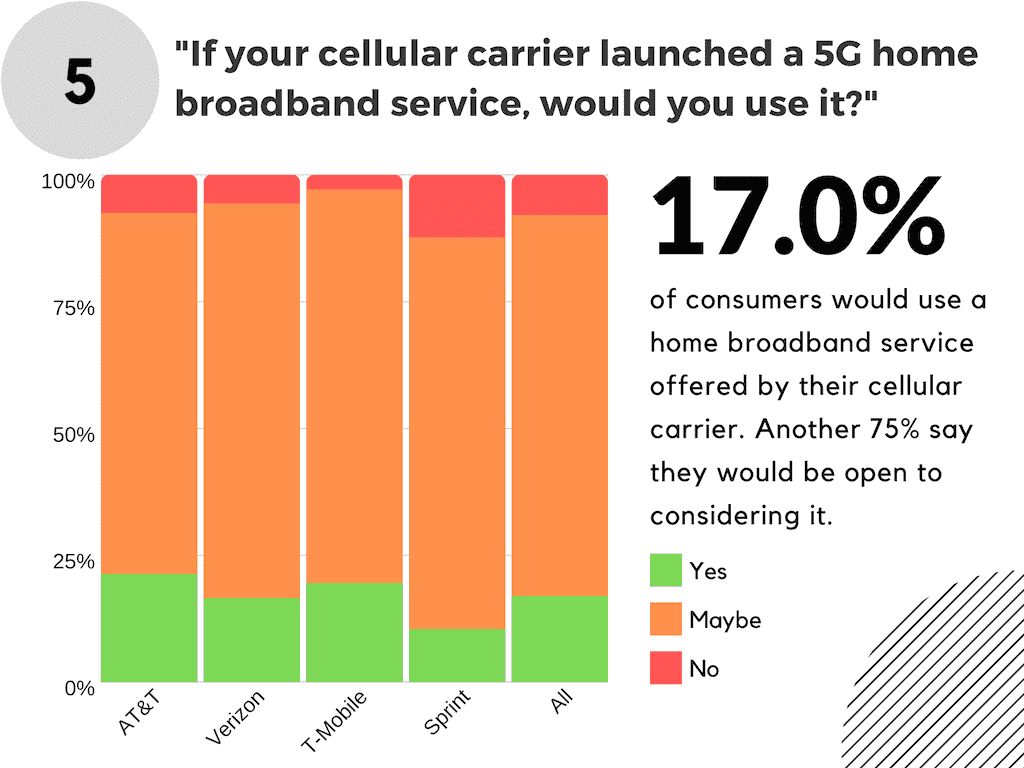
Verizon has already launched commercial 5G home broadband service in four cities, and T-Mobile has discussed plans to launch its own similar service. We wanted to know exactly how much interest in these services.
While more customers were open to 5G home broadband than opposed to it, most consumers were unsure. It’s evident that the adoption of 5G home broadband will likely depend strongly on performance and pricing.
| Yes | No | Maybe |
| AT&T | 21.3% | 71.1% | 7.6% |
| Verizon | 16.5% | 77.8% | 5.7% |
| T-Mobile | 19.6% | 77.5% | 2.9% |
| Sprint | 10.5% | 77.1% | 12.4% |
| All Respondents | 17.0% | 75.0% | 8.0% |
Part 2: Shortcomings in 4G LTE Coverage
While carriers are focused on the 5G rollout, we wanted to understand what percentage of users still experience issues with 4G LTE coverage.
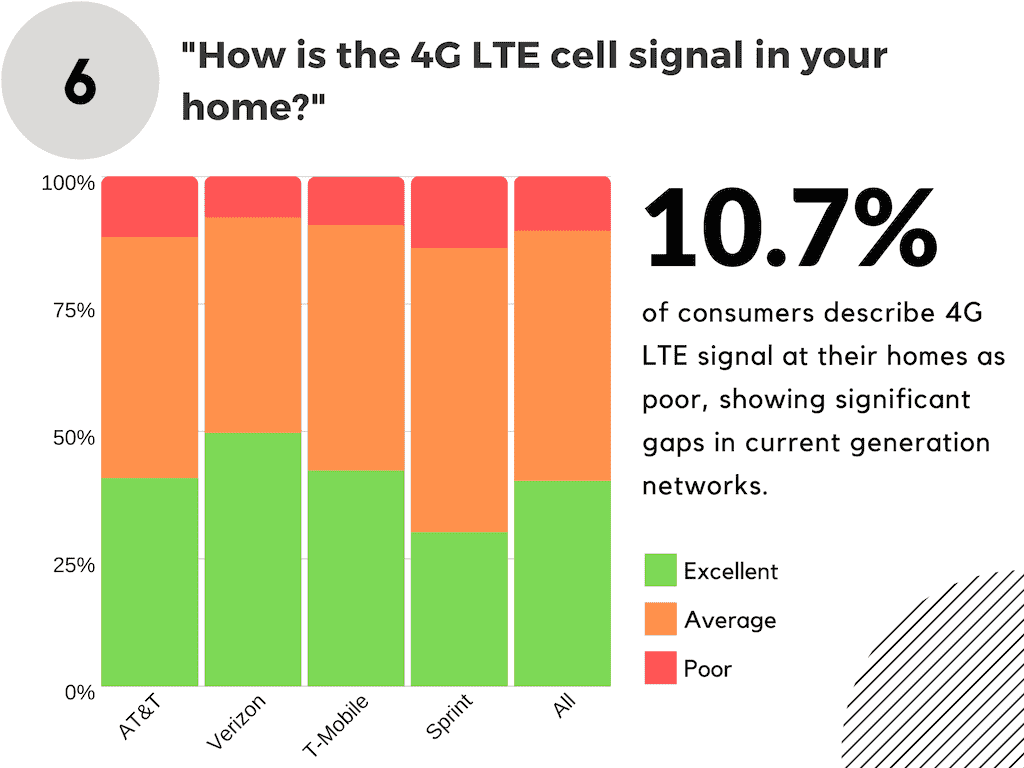
It’s now been 8 years since carriers first started rolling out 4G LTE, and the technology has released maturity. However, 10.7% of consumers still reported coverage issues in their homes – a significant proportion.
| Excellent | Average | Poor |
| AT&T | 40.8% | 47.3% | 11.9% |
| Verizon | 49.7% | 42.2% | 8.1% |
| T-Mobile | 42.3% | 48.1% | 9.5% |
| Sprint | 30.2% | 55.7% | 14.1% |
| All Respondents | 40.3% | 49.0% | 10.7% |
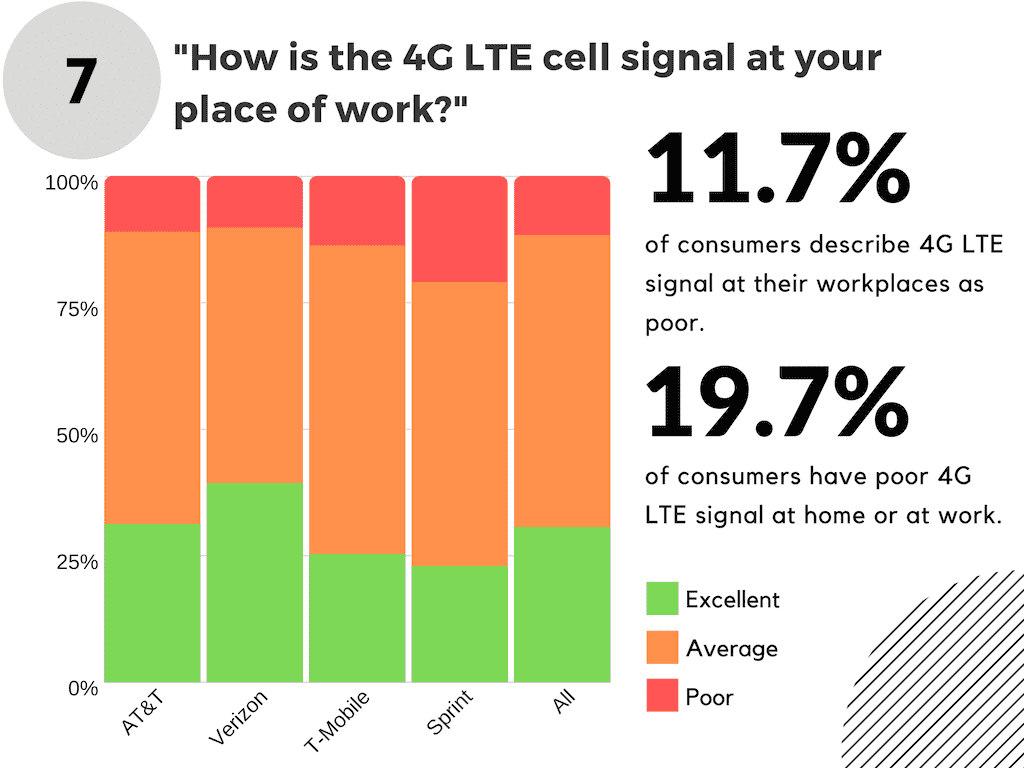
An even larger proportion of users reported signal issues at work. Verizon subscribers reported the best coverage, while Sprint and T-Mobile users reported the worst signal.
One interesting note here is that T-Mobile’s results here were significantly worse than AT&T or Verizon’s, even though their coverage in homes was competitive. AT&T and Verizon have had significantly more established approaches to in-building coverage solutions such as DAS and small cells, which may explain the significant difference in respondent’s experiences.
Looking across both the previous questions, we found that 19.7% of respondents experience 4G LTE signal issues either at home or at work. Clearly there are still significant challenges to providing adequate LTE coverage, despite 5G being around the corner.
| Excellent | Average | Poor |
| AT&T | 31.3% | 57.7% | 11.0% |
| Verizon | 39.3% | 50.5% | 10.2% |
| T-Mobile | 25.4% | 60.9% | 13.7% |
| Sprint | 22.9% | 56.2% | 20.9% |
| All Respondents | 30.7% | 57.6% | 11.7% |
Part 3: Cell Signal and Cancer
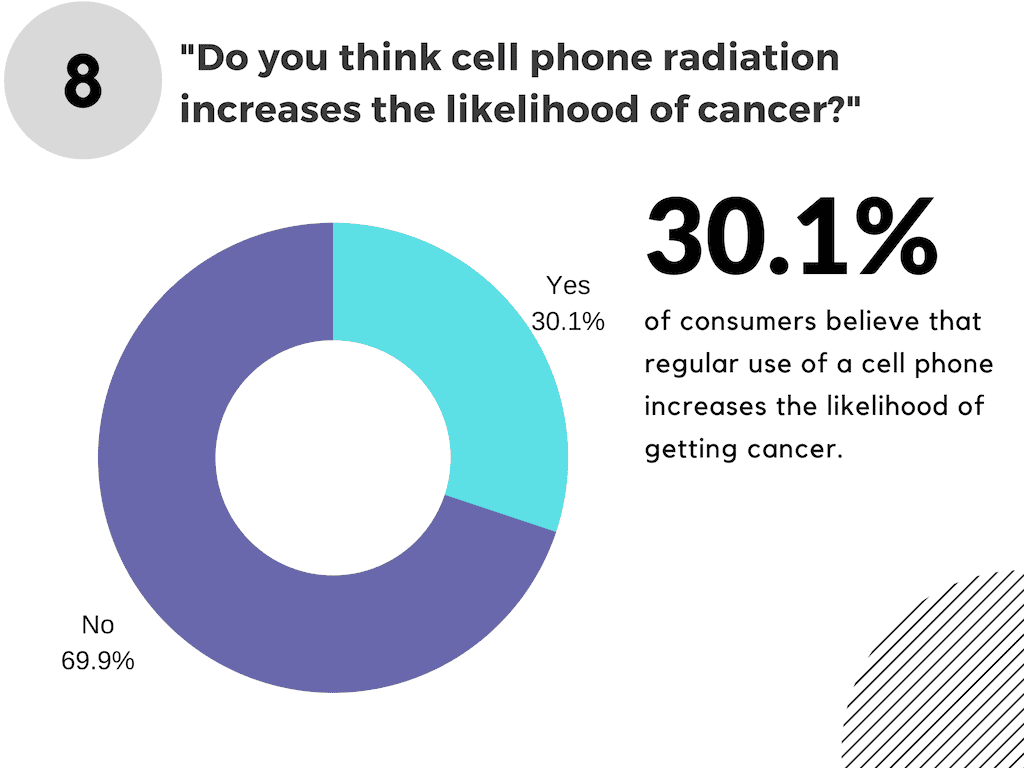
Some cities are adopting ordinances to prevent the roll-out of the 5G “small cell” towers that would be required to achieve widespread coverage, despite efforts by the Federal Communications Commission to ease the roll-out process.
Organizations like the EMF Safety Network that are pushing for restrictions to 5G rollouts claim that the new technology, and the “millimeter wave” frequencies that it utilizes, are “scientifically shown to harm people and nature.” The reality is that the research on the subject is as of yet inconclusive.
30.1% of our survey respondents indicated that they believe that cell phone radiation increases the likelihood of cancer - a significant proportion. Carriers will likely continue to see resistance as they attempt to aggressively roll new 5G towers out across the country.
Further reading
Past Reports:
The following is a list of our most popular content:
Guides























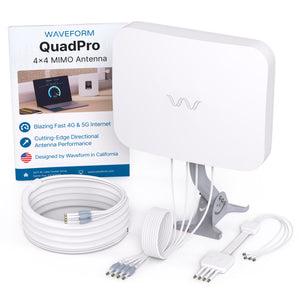
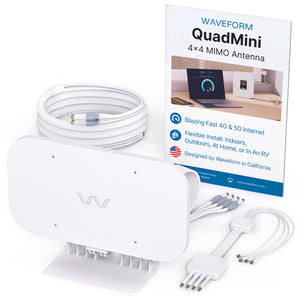
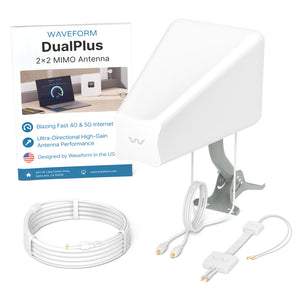





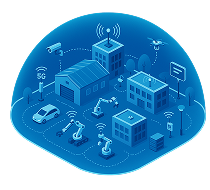






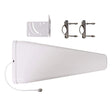
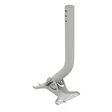
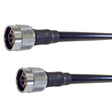









 It’s now been 8 years since carriers first started rolling out 4G LTE, and the technology has released maturity. However, 10.7% of consumers still reported coverage issues in their homes – a significant proportion.
It’s now been 8 years since carriers first started rolling out 4G LTE, and the technology has released maturity. However, 10.7% of consumers still reported coverage issues in their homes – a significant proportion.

